An old Android radio
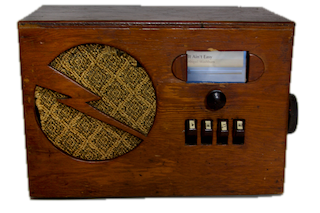
Introduction
I really like the simplicity of some vintage radio: three or four stations. Here - jazz, here - the news, here - the classic. Well, and I also like to make all sorts of interesting things. So I decided to put together a radio that will play the music I downloaded and download podcasts. Moreover, I wanted the device to look like the beginning of the 20th century.
In this post I will tell you about the details of the project: about an Android device, about the IOIO Board, and about carving on wood.
Result
Here’s what a finished project looks like:
')
Process of creation
Components
Radio. A search on ebay showed that there are so many vintage radios on sale. Some work, some broken. I chose the most decent of the broken ones: I don’t care for anything else, but I didn’t want to break the working thing. Yes, and there are much cheaper broken. This is what I liked:
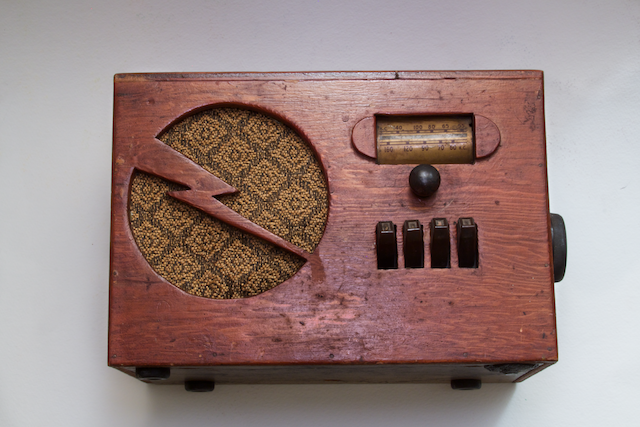
Here are the broken vacuum tubes:
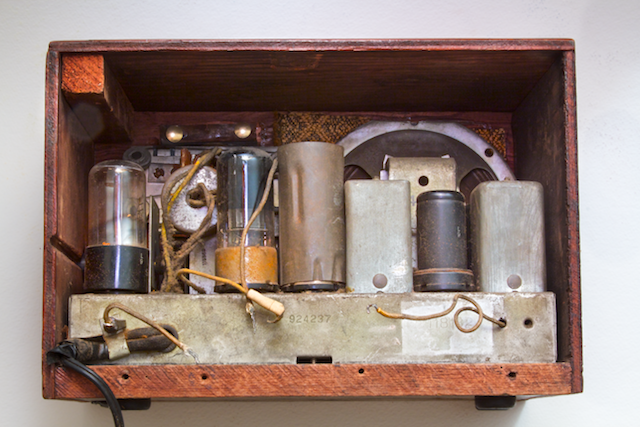
Archos 28. This cheap player based on the Android OS I liked from a previous project . The low price, 8 Gb of internal memory, audio output and Wi-Fi are great for uncomplicated construction. Personal experience has also found that the player works fine 24/7.
The reader will ask: why not solve the problem with a microcontroller and a set of modules? It seemed to me cheaper and easier to use this phone: all that is needed is already assembled on one board, plus Android OS provides a good level of abstraction. Radio will be included in the network around the clock, so that problems with power consumption does not arise.
IOIO Board to interact with the "iron". This thing connects to the device via USB and is recognized by the OS as “debug mode is on”. There is a small API that allows you to read the status of the line (both digital and analog) from any Android program and generate a signal (digital and PWM) on the line.
The reader will ask: why not use Android ADK ? Alas, ADK support was added only in Android 2.3. The player from Archos works on 2.2.
Amplifier based on STA540 . I don't know much about amplifiers. The choice fell on this part largely because of the recommendations of friends, well, and because of the presence of a set of assembly. STA540 - Class AB electronic amplifier. I really liked the Stand-by mode: extremely quiet mode (no noise at all).
The reader will ask: why not restore the already existing vacuum tubes? The answer is simple: I do not have the equipment to test and work with them. And still dumb work c 120V. The radio I bought seems to have used the AA5 architecture.
Blaupunkt GTx-542 speakers . 4 Ohms, 70–20,000 Hz, two bands (for low and high frequencies) and suitable sizes determined my choice.
The reader will ask: why not some other columns? I’ll scout my hands here. If there are any reasons why another model is better suited, please write in the comments.
Others Chinese non-angled rotation angle sensor to switch songs with a side grip. Four buttons and several resistors.
Preparing the chassis
First, I took out the old components and cleaned the metal base from the age-old dirt (thanks, WD-40 ). In order not to mount new components on the piece of iron, I decided to cut the chassis from the base of the printed circuit board:
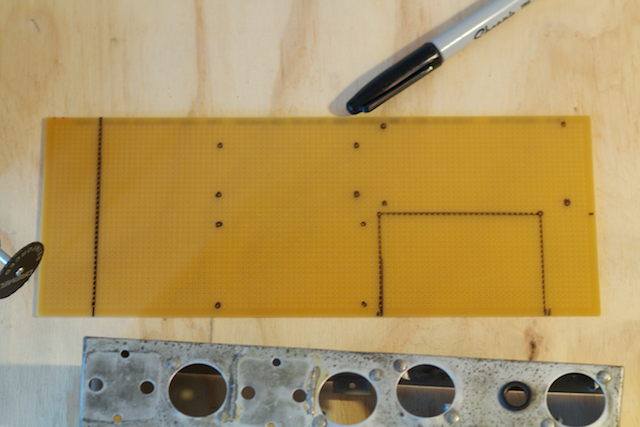
Body preparation
In general, the body fit very well. I even decided to leave the old potentiometer for the change sound knob. I did not like only one thing: the screen of the phone was too deeply sunk into the body. With the help of Dremel, I made a niche:
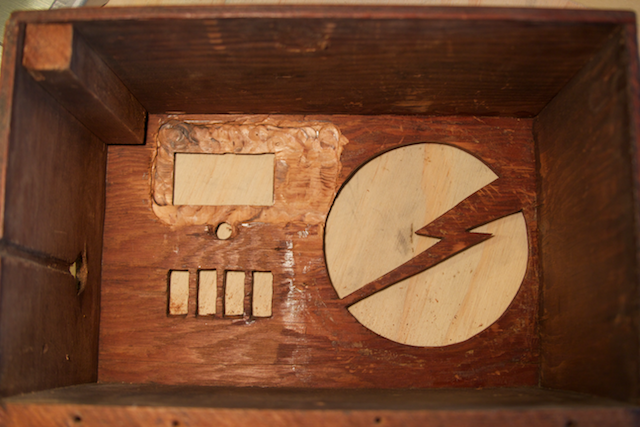
With a phone, it looks like this:

Software
Nothing really complicated. The device is controlled by an Android application that reads the state of the iron and plays the appropriate song from the SD card. Perhaps the most interesting was the process of preparing the interface. I really wanted to make the screen fit the body style. I came up with this model: four drums in a row (on the drum at the station). On each drum song titles are written. The side handle turns the current drum, the buttons switch the drums.
At first I tried to implement it on OpenGL . I must say, it turned out not very beautiful. So I stopped at the usual two-dimensional graphics. First, painted the background:
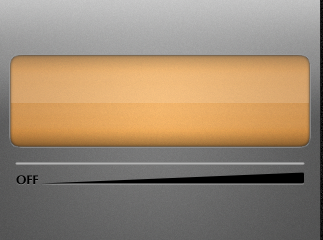
Then I chose fonts and effects:

The logic for downloading podcasts is very simple: download the latest issue of BBC Global News , put it on an SD card and delete all previous issues. Repeat twice a day.
There are plans to fasten a small FTP server so that music can be downloaded over the network (the device should be connected to the home Wi-Fi and so).
Together
Iron looks like this:
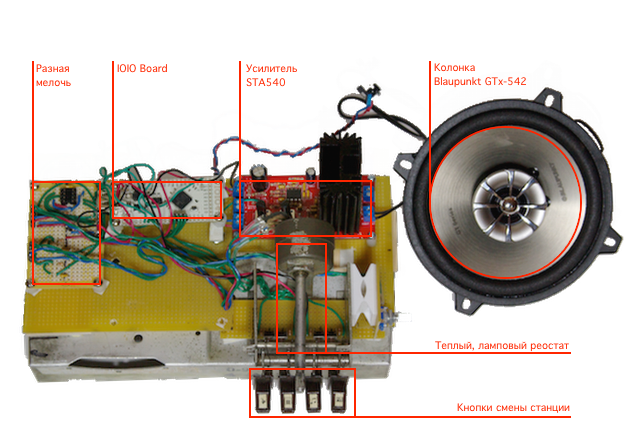
I really wanted the buttons to talk about what would be playing. One folder station plays jazz, the other one is processed classics, the third one is different melodies, the fourth station is news. Here’s what the main display looks like:
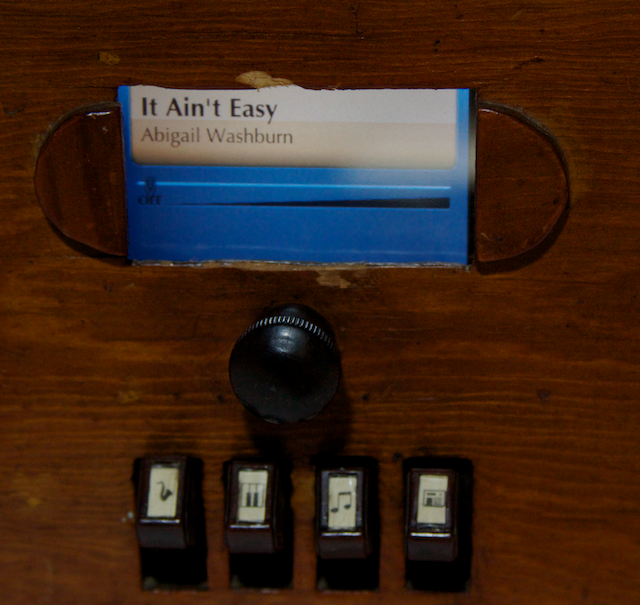
This is how the device looks from behind:
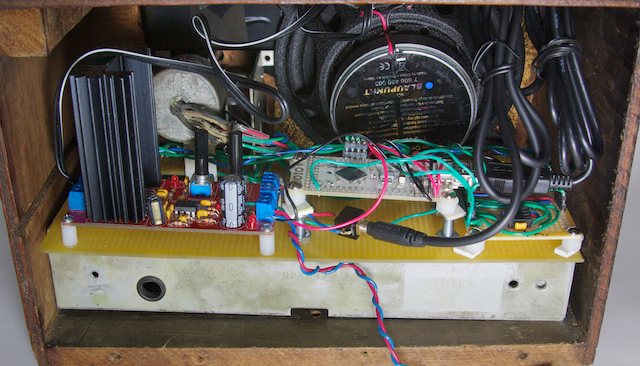
Conclusion
Radio plays music, downloads podcasts and makes you happy with its appearance. I will be happy to answer any questions, listen to criticism and suggestions.
Source: https://habr.com/ru/post/133490/
All Articles